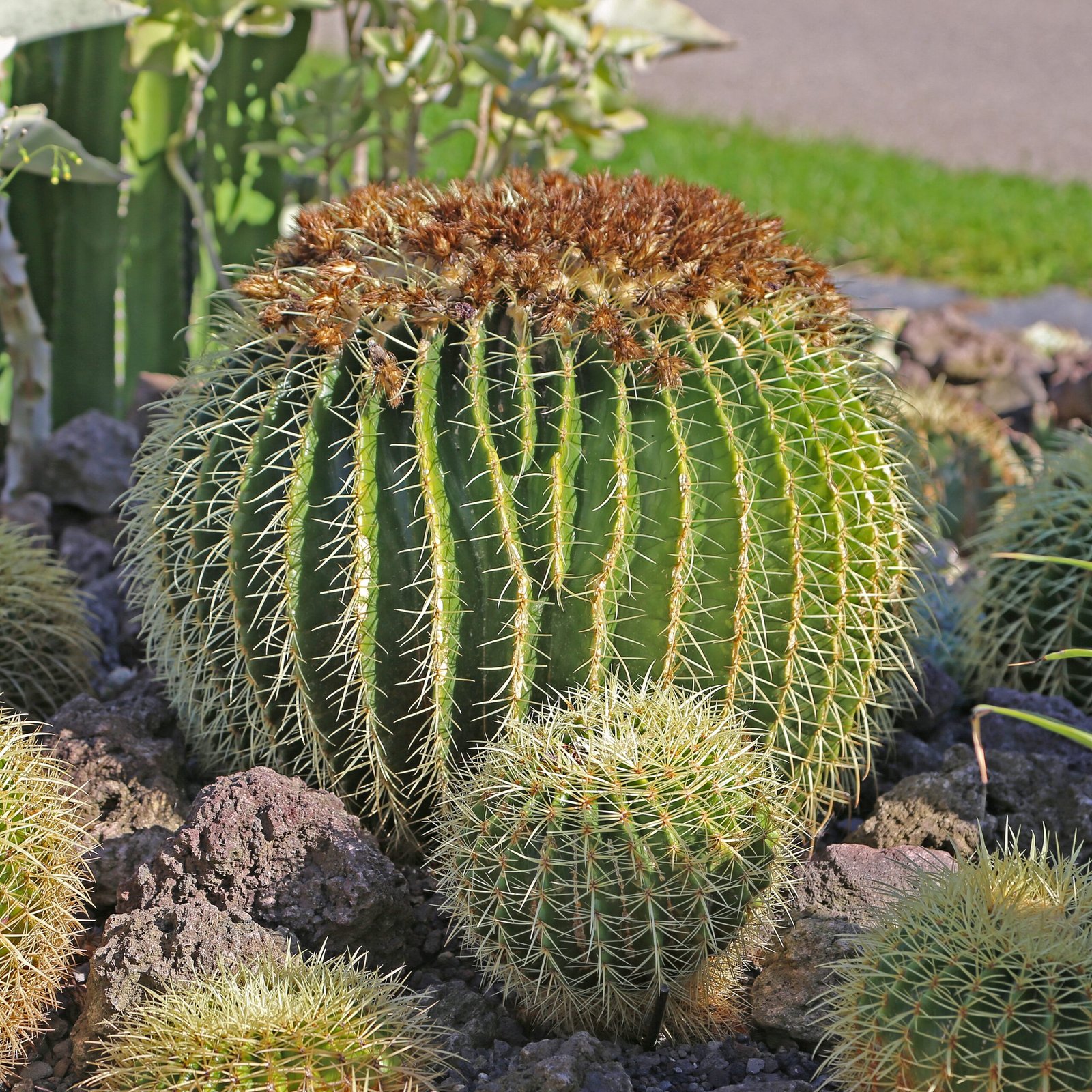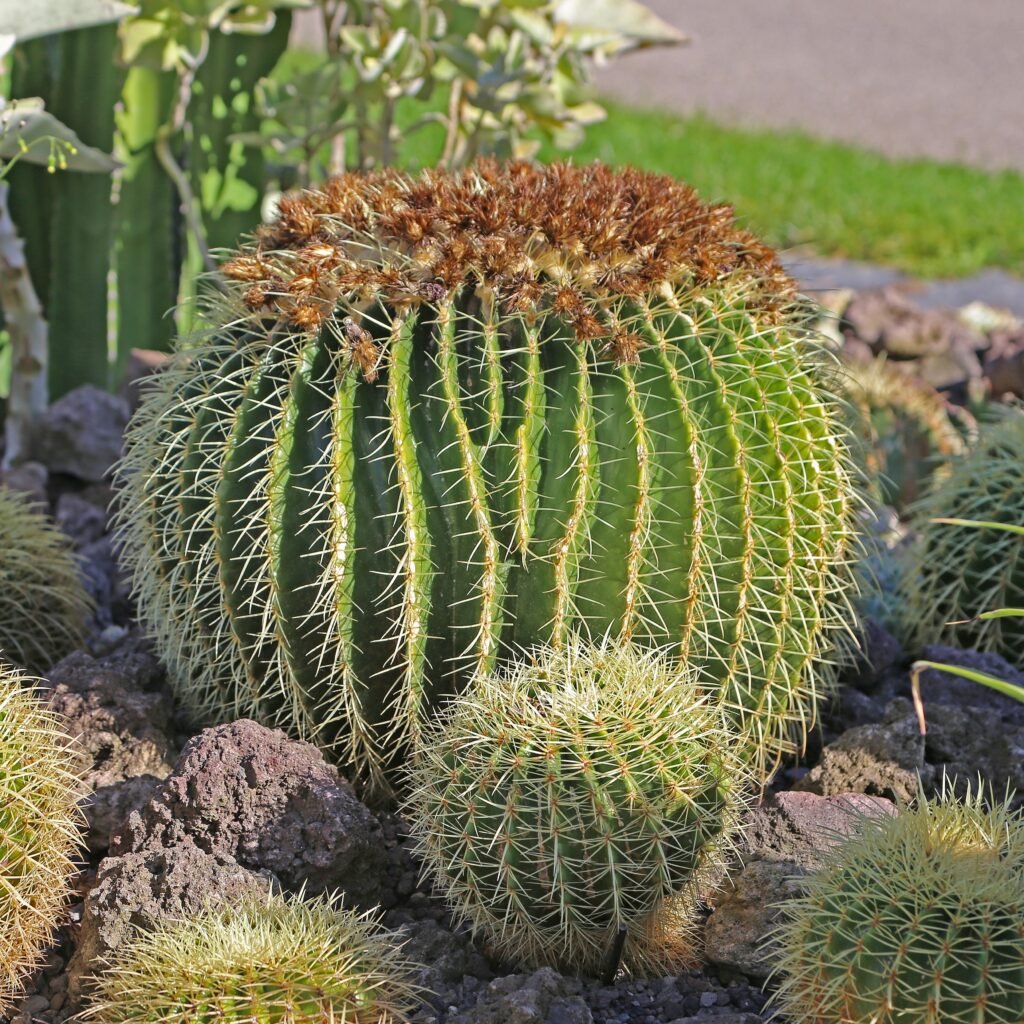Picture this: it’s 120°F in the Sonoran Desert, and while you’d be desperately searching for shade, a giant saguaro cactus stands tall, thriving in conditions that would send most plants into botanical shock. What if I told you that cacti have cracked the code to surviving Earth’s most brutal environments using engineering principles that would make NASA jealous? These spiky survivors have spent millions of years perfecting their desert survival toolkit, and their secrets are more fascinating than you might imagine.
The Spine Game: Nature’s Ultimate Multi-Tool

Cactus spines aren’t just sharp decorations meant to keep hungry animals away. They’re sophisticated survival instruments that serve multiple critical functions in the desert’s unforgiving environment. These modified leaves have evolved into the perfect desert accessory, combining defense, climate control, and water collection into one ingenious package.
The positioning and density of spines create micro-climates around the cactus surface, trapping cool air and creating shade patterns that can reduce surface temperatures by up to 18 degrees. Think of them as nature’s air conditioning system, complete with strategic ventilation holes. Some barrel cacti have spine arrangements so precise they follow mathematical patterns that optimize airflow and heat dissipation.
But here’s where it gets really clever: spines also act as dew collectors. In the early morning hours when humidity is highest, these needle-like structures condense moisture from the air and channel it directly to the plant’s base. It’s like having thousands of tiny water collection straws working around the clock.
The Waxy Fortress: Cuticle Chemistry at Its Finest

Beneath those intimidating spines lies another layer of desert genius: the waxy cuticle. This isn’t your grandmother’s car wax – it’s a complex biochemical barrier that’s thicker and more sophisticated than almost any other plant covering on Earth. The waxy coating can be up to 10 times thicker than what you’d find on a typical houseplant.
This waxy fortress is made up of long-chain fatty acids and alcohols that create an almost impermeable seal. During the scorching day, this coating prevents precious water from escaping through the plant’s skin. The chemistry is so effective that some cacti lose less than 5% of their stored water per month, even in extreme drought conditions.
The real magic happens at the molecular level, where specialized compounds called cutins form cross-linked networks that become more impermeable as temperatures rise. It’s like having a smart coating that automatically adjusts its protective properties based on environmental stress.
Accordion Architecture: The Art of Expansion and Contraction

Ever wondered why barrel cacti have those distinctive ribs running up their sides? Those aren’t just for show – they’re sophisticated engineering solutions that allow the plant to expand and contract like a living accordion. When water becomes available, cacti can increase their volume by up to 200%, storing massive amounts of liquid for future droughts.
The ribbed structure distributes mechanical stress evenly across the plant’s surface, preventing tears or ruptures that could be fatal in the desert. It’s similar to how architects use expansion joints in bridges and buildings, but cacti figured this out millions of years before humans invented engineering.
These pleated sides also create additional surface area for photosynthesis while maintaining the plant’s ability to shrink during dry periods. The flexible skin between ribs contains specialized cells that can stretch and compress repeatedly without losing their structural integrity.
CAM Photosynthesis: The Night Shift Revolution

While most plants are busy photosynthesizing during the day, cacti have revolutionized the process by switching to the night shift. CAM (Crassulacean Acid Metabolism) photosynthesis is like having a completely different work schedule that avoids the desert’s peak energy costs. This metabolic wizardry allows cacti to keep their stomata closed during the scorching day and open them only when temperatures drop at night.
During the cool desert nights, cacti collect carbon dioxide and store it as organic acids – essentially packing tomorrow’s lunch while everyone else is sleeping. When the sun rises and photosynthesis kicks into high gear, they unlock these stored acids and use them for energy production without having to open their stomata and lose precious water.
This system is so efficient that CAM plants can produce the same amount of food as regular plants while using up to 90% less water. It’s like getting premium performance on economy fuel consumption, and it’s one of evolution’s most impressive efficiency upgrades.
Root Networks: The Underground Internet

Beneath the desert floor, cacti deploy root systems that would make telecommunications companies envious. These underground networks can extend horizontally for distances up to three times the plant’s height, creating a water-collecting web that spans impressive territories. A single large saguaro might have roots covering an area equivalent to a football field.
But it’s not just about spread – it’s about speed and intelligence. Cactus roots can grow new feeder roots within hours of detecting moisture, racing to capture every precious drop before it evaporates or gets absorbed by competitors. These temporary roots can appear overnight and disappear just as quickly when water becomes scarce again.
The root architecture includes both shallow, wide-spreading networks for catching brief desert rains and deeper taproots that can reach groundwater sources 30 feet below the surface. It’s like having both a rain-catching tarp and a private well system working simultaneously.
Mucilage Magic: The Slime That Saves Lives

Inside every cactus lies a secret weapon that sounds more like science fiction than botany: mucilage. This gel-like substance isn’t just plant slime – it’s a sophisticated water management system that can absorb and hold water at up to 30 times its own weight. Think of it as nature’s version of those super-absorbent crystals used in diapers, but infinitely more complex.
Mucilage doesn’t just store water; it regulates its release, providing a steady supply during drought conditions while preventing the rapid loss that would occur with free-flowing water. The gel matrix creates a buffering system that maintains cellular hydration even when external conditions become extreme.
This remarkable substance also provides structural support, helping maintain cell shape and preventing collapse during severe dehydration. Some desert survival experts have learned to tap into this natural reservoir, extracting life-saving moisture from cacti during emergencies.
Heat Reflection: The Physics of Staying Cool

Cacti have mastered the art of solar reflection long before humans started painting roofs white to reduce energy costs. Many species have evolved light-colored surfaces and specialized cellular structures that reflect rather than absorb the sun’s intense radiation. Some cacti reflect up to 60% of incoming solar radiation, dramatically reducing their internal temperature.
The surface texture plays a crucial role in this cooling strategy. Microscopic structures create a slightly fuzzy appearance that scatters light in multiple directions, preventing the buildup of heat-absorbing hotspots. It’s like having a natural cooling paint job that never needs reapplication.
Certain species take this strategy even further by producing a whitish coating during extreme heat stress. This temporary sun protection can appear within days of temperature spikes and fades when conditions moderate, giving cacti a dynamic cooling system that responds to real-time environmental conditions.
Water Storage Wizardry: Cellular Engineering Marvels

Inside cactus tissues lies some of the most sophisticated water storage technology in the natural world. Specialized cells called hydrenchyma can store water at concentrations that would burst ordinary plant cells. These cellular reservoirs are reinforced with flexible cell walls that can expand dramatically without rupturing.
The water storage system includes multiple redundancies and fail-safes. If outer storage cells become damaged, inner reserves remain protected. The entire system is compartmentalized, preventing catastrophic water loss from localized damage. It’s like having a series of sealed water tanks with automatic backup systems.
Perhaps most remarkably, stored water remains remarkably pure despite being held for months or even years. The cellular chemistry prevents bacterial growth and maintains water quality through sophisticated biochemical processes that scientists are still working to fully understand.
Shape Strategy: Geometry Meets Desert Survival

The iconic shapes of cacti aren’t random – they’re mathematical solutions to desert survival challenges. Spherical barrel cacti minimize surface area relative to volume, reducing water loss while maximizing storage capacity. It’s the same principle engineers use when designing pressure vessels and storage tanks.
Columnar cacti like saguaros optimize vertical growth to capture moisture from fog and dew while presenting minimal surface area to the intense midday sun. Their tall, narrow profile also allows them to take advantage of cooler air temperatures at higher elevations above the desert floor.
Pad-shaped cacti like prickly pears maximize photosynthetic surface area while maintaining the ability to orient their faces to minimize sun exposure during the hottest parts of the day. Some species can actually adjust the angle of their pads seasonally, following the sun’s changing path like living solar panels.
Chemical Warfare: Toxic Defense Systems

Beyond their physical defenses, many cacti deploy sophisticated chemical weapons that would make a pharmaceutical company jealous. These plants produce alkaloids, glycosides, and other compounds that can cause anything from mild irritation to serious toxicity in potential predators. The chemical arsenal is often concentrated in the outer tissues, creating a multi-layered defense system.
Some cacti can actually increase their toxin production in response to herbivore pressure, ramping up chemical defenses when under attack. This induced chemical response can make previously palatable tissue completely inedible within days of damage detection.
The chemical complexity extends to antimicrobial compounds that prevent bacterial and fungal infections in the harsh desert environment. These natural antibiotics help cacti maintain healthy tissue despite constant exposure to pathogens and environmental stressors that would overwhelm less prepared plants.
Thermal Regulation: Living Air Conditioning Systems

Cacti have evolved intricate systems for managing internal temperature that rival modern HVAC technology. The combination of spine shading, surface reflection, and internal thermal mass creates a remarkably stable internal environment despite external temperature swings of 60 degrees or more.
Large cacti act as thermal batteries, absorbing heat during the day and releasing it slowly at night. This thermal inertia helps maintain optimal temperatures for cellular processes and prevents the dramatic temperature fluctuations that stress most desert organisms.
Some species use evapotranspiration strategically, opening stomata briefly during extreme heat to provide evaporative cooling despite the water cost. This calculated trade-off demonstrates the sophisticated cost-benefit analysis these plants perform continuously to optimize survival.
Symbiotic Partnerships: The Desert Social Network

Cacti don’t survive alone – they’ve formed intricate partnerships with other desert organisms that create mutually beneficial survival networks. Nurse plants provide shade and protection for young cacti, while mature cacti offer nesting sites and protection for various animals in return for seed dispersal and pest control services.
Underground, cacti maintain relationships with specialized fungi that extend their root networks and improve nutrient uptake. These mycorrhizal partnerships can increase a cactus’s effective root surface area by up to 1000%, dramatically improving their ability to extract scarce desert resources.
Some cacti have co-evolved with specific pollinator species, timing their flowering to coincide with animal migration patterns and offering concentrated nectar rewards during critical periods. These partnerships ensure reproductive success while providing vital resources to desert wildlife.
Reproductive Resilience: Desert Dating Strategies

Reproduction in the desert requires timing, patience, and incredible resource management. Many cacti can remain sexually dormant for years until conditions become perfect for successful reproduction. When the moment arrives, they invest massive amounts of stored energy into spectacular flowering displays that can transform the desert landscape overnight.
Cactus flowers are marvels of efficiency, often blooming for just 24-48 hours to minimize water loss while maximizing pollinator attraction. Some species coordinate their flowering across entire populations, creating synchronized blooming events that ensure cross-pollination and genetic diversity.
Seeds represent another masterpiece of desert adaptation, equipped with specialized coatings that can remain dormant in soil for decades until perfect germination conditions arrive. Some seeds require specific rainfall patterns, temperature cycles, and even chemical triggers from other plants before they’ll sprout.
Size Matters: Scale and Desert Survival

The relationship between size and survival in desert cacti reveals fascinating evolutionary trade-offs. Tiny cacti can hide in rock crevices and take advantage of microclimates, while giants like saguaros create their own environmental conditions through sheer thermal mass and height advantages.
Large cacti become ecosystem engineers, modifying local environmental conditions in ways that benefit themselves and other desert organisms. Their shade, moisture, and temperature moderation create desert oases that support biodiversity far beyond what the surrounding landscape could sustain.
Medium-sized cacti often represent the sweet spot for desert survival, large enough to store significant water reserves but small enough to avoid the massive resource requirements needed to maintain giant desert monuments. These species often show the greatest diversity and adaptability across different desert environments.
Seasonal Intelligence: Reading the Desert Calendar

Cacti possess sophisticated internal timing systems that help them prepare for seasonal changes months in advance. They can detect subtle changes in day length, temperature patterns, and humidity that signal the approach of different seasons, allowing them to adjust their physiology accordingly.
During pre-drought periods, many species increase water storage, reduce growth rates, and strengthen their protective barriers. This preparation can mean the difference between survival and death when extreme conditions arrive. It’s like having a long-range weather forecast built into their genetic code.
Some cacti exhibit different metabolic states for different seasons, essentially hibernating during the harshest periods and becoming more active when resources become available. This seasonal cycling allows them to minimize energy expenditure during stress periods while maximizing growth and reproduction when conditions improve.
Desert Innovation: Lessons for Human Technology

Scientists and engineers are increasingly looking to cacti for inspiration in developing new technologies for water collection, building materials, and energy-efficient design. Cactus-inspired water collection systems are being developed for arid regions, mimicking the spine and surface structures that make these plants such efficient moisture harvesters.
The waxy coatings and surface textures of cacti have inspired new types of protective materials and self-cleaning surfaces that could revolutionize everything from building facades to solar panel efficiency. Researchers are working to synthesize artificial versions of cactus waxes for industrial applications.
Perhaps most importantly, cacti demonstrate that thriving in extreme environments isn’t about fighting nature – it’s about working with natural forces through intelligent design and efficient resource management. These principles could guide human adaptation to climate change and resource scarcity in the coming decades.
Evolutionary Masterpiece: Millions of Years in the Making

The sophisticated survival systems we see in modern cacti represent millions of years of evolutionary refinement. Each adaptation was tested against the harsh realities of desert life, with failures resulting in extinction and successes being passed down through generations. This natural R&D process has produced some of the most efficient biological systems on Earth.
Fossil evidence suggests that early cacti were much more similar to conventional plants, gradually developing their specialized features as climates became more arid. The transformation from leafy plants to spiny water-conserving specialists represents one of evolution’s most dramatic makeovers.
Modern cacti continue to evolve, with new species and adaptations emerging in response to changing environmental conditions. Climate change is creating new evolutionary pressures that may drive the development of even more sophisticated desert survival strategies in the coming centuries.
The Future of Desert Mastery

As our planet faces increasing desertification and water scarcity, understanding cactus survival strategies becomes more than just scientific curiosity – it becomes essential knowledge for our own survival. These plants have already solved many of the challenges that human civilization is just beginning to face.
Conservation efforts are working to protect cactus species and their habitats, recognizing that these living laboratories contain solutions to problems we haven’t even encountered yet. Every species lost represents millions of years of evolutionary problem-solving disappearing forever.
The next time you see a cactus, remember that you’re looking at one of Earth’s most sophisticated survival machines – a living testament to the power of adaptation, efficiency, and intelligent design. These spiny survivors have spent eons perfecting the art of desert living, and their lessons could help us navigate an increasingly challenging world. What other secrets might they be hiding in their spiny embrace?




